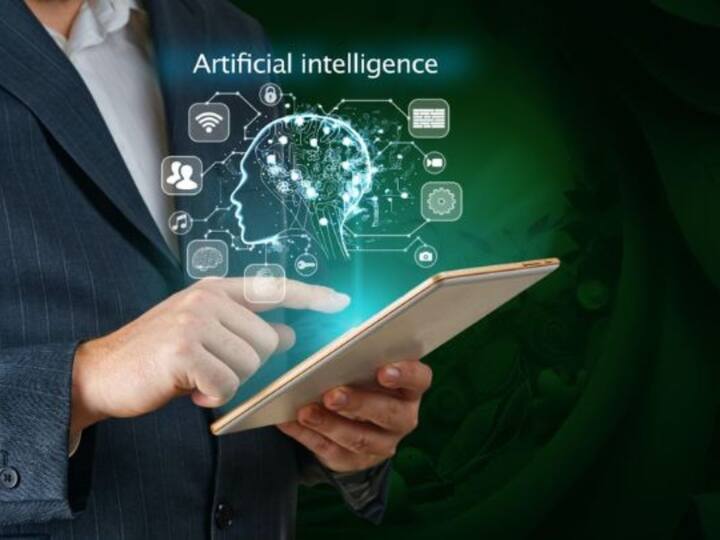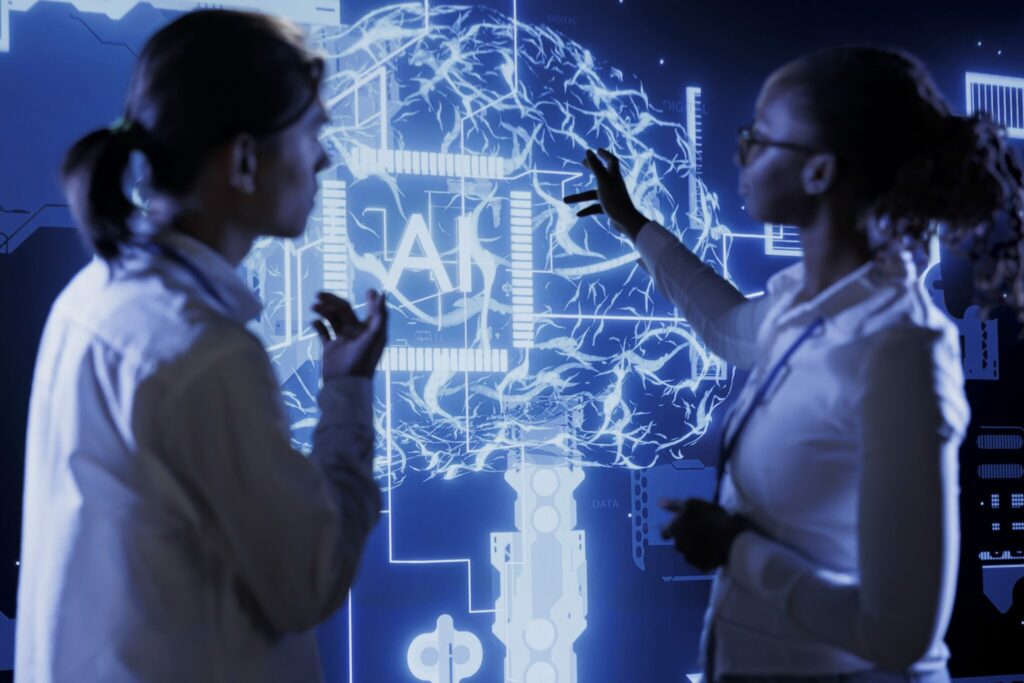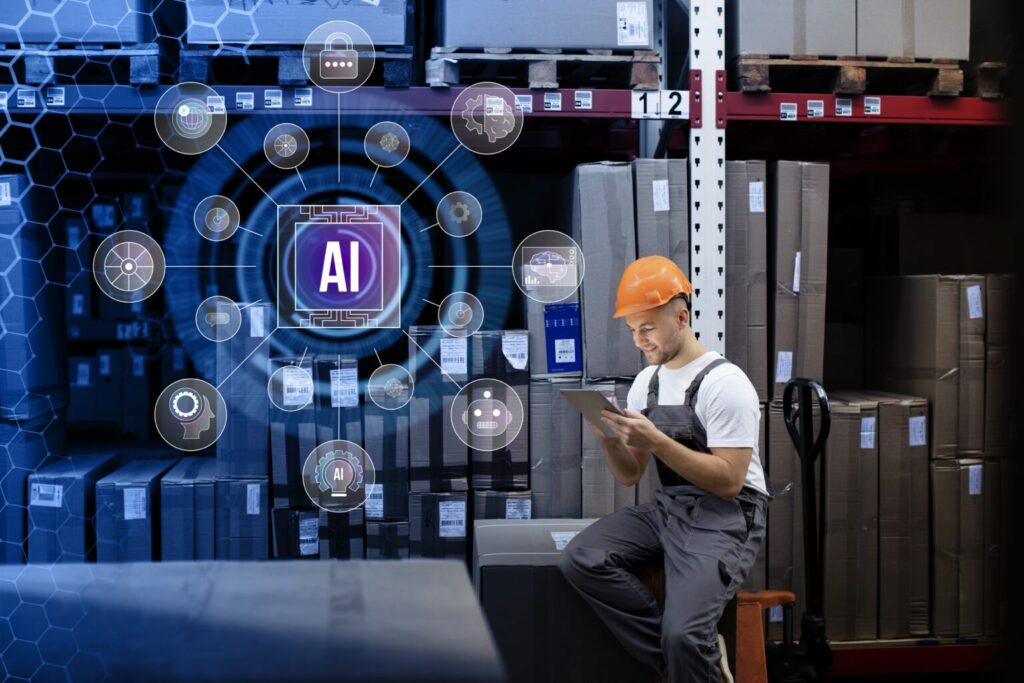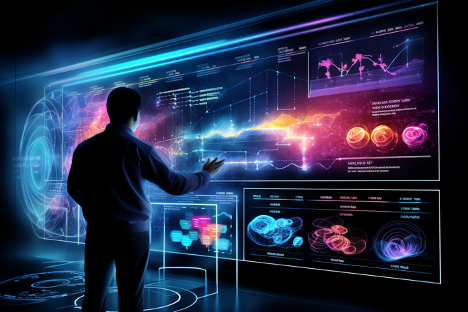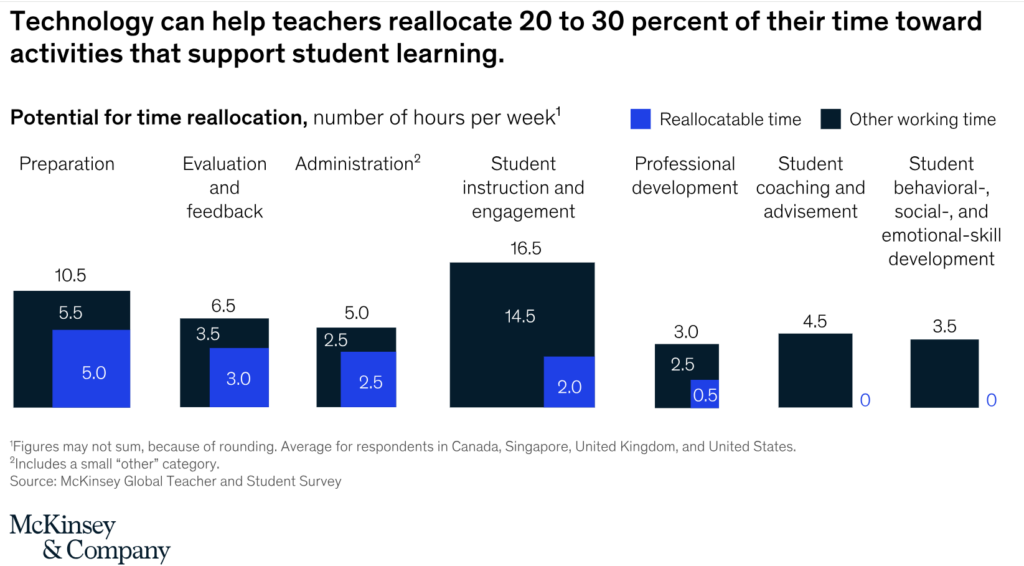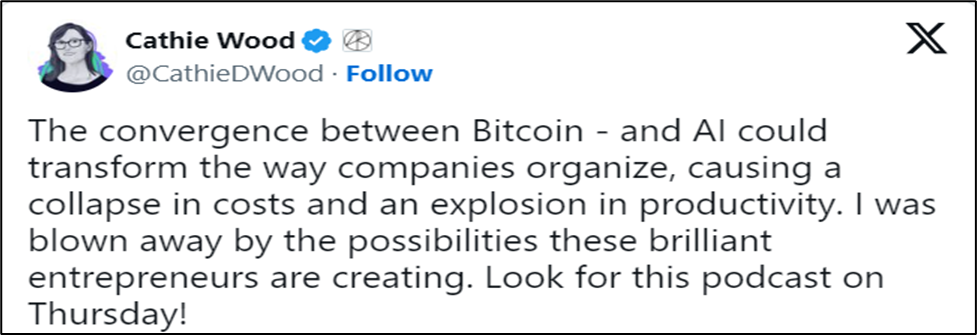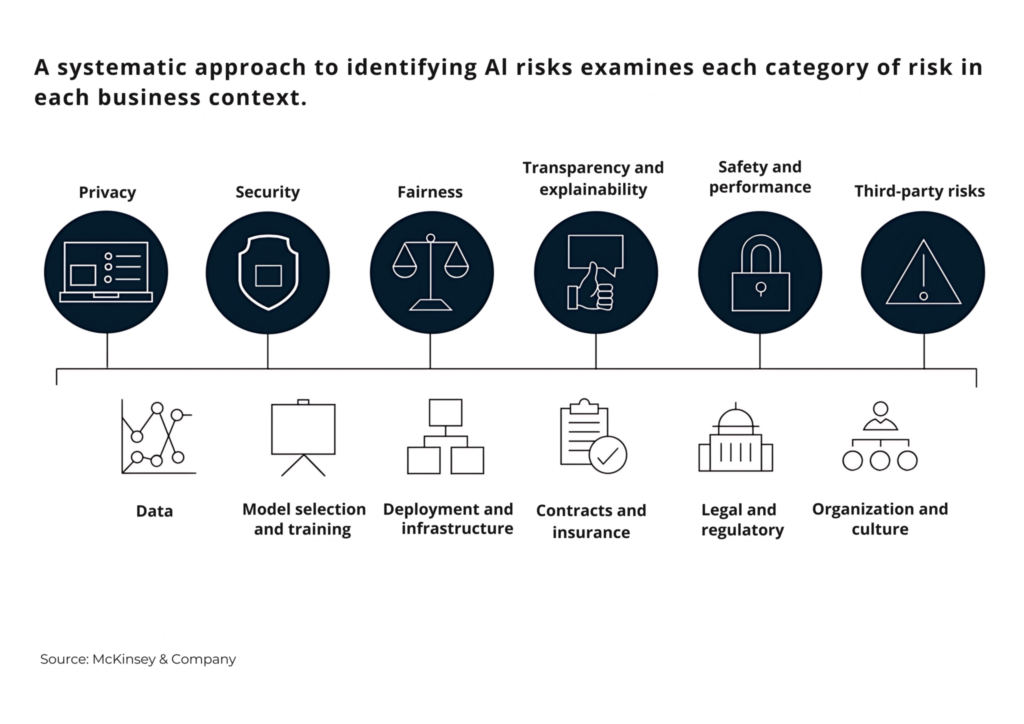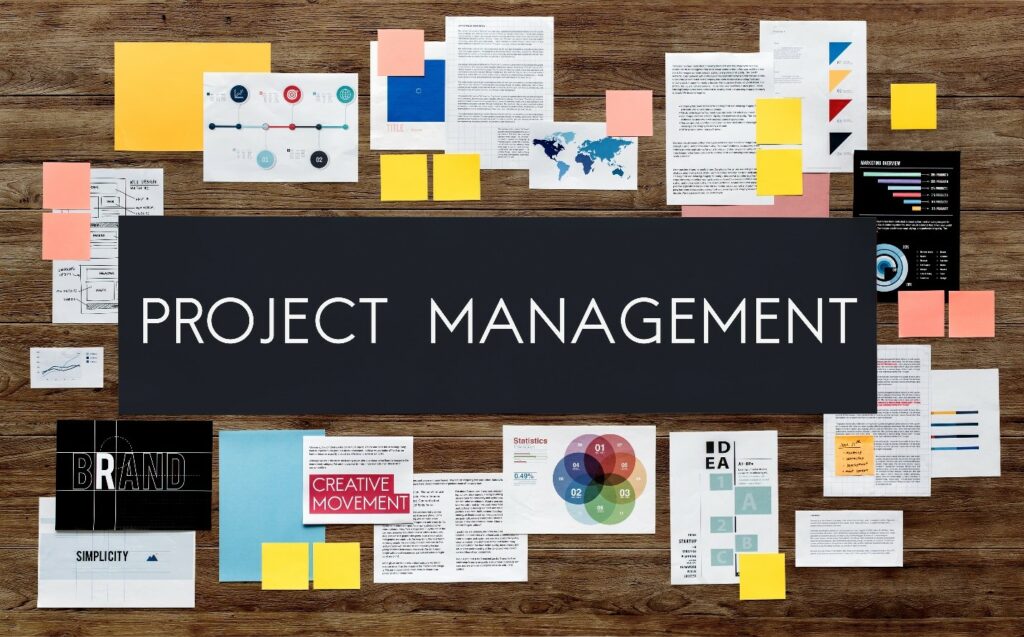
Exploring Ethical AI in the Workplace
Ethical AI in the workplace refers to well-defined guidelines related to individual values, which involve adhering to non-discriminatory practices, non-manipulation, respecting individual rights, privacy and fair AI practices at the workplace to improve AI job quality.
It prioritizes fundamental importance to ethical considerations in determining the legitimate use of AI in the workplace.
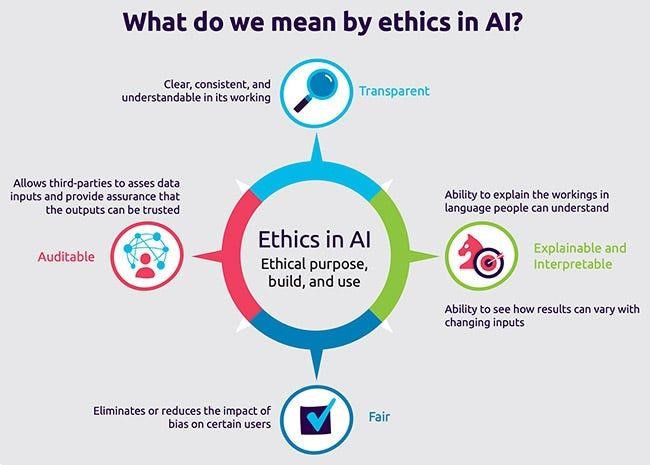
Strategies for Fairness and Sustainability in the Workplace
There are Five Pillars of AI Ethics which includes:
1. Accountability
Accountability in AI is crucial for completing and speeding up processes which ensures reliability, requiring continuous evaluation by CIOs to maintain efficient business operations.
2. Reliability
AI must be dependable, for seamless and error-free outputs.
3. Explain-ability
AI and ML models should be understood and well explained across departments and organizations otherwise the benefits of AI become irrelevant if the technology is not coherent.
4. Security
It is essential to understand the potential risks of AI. If AI does not guarantee privacy, businesses will struggle to keep customers.
5. Privacy
As individuals and Businesses heavily rely on and work on the cloud it becomes essential to Protect customer data.
Implementing Fair AI Practices
- Inclusive and Equity: Ensuring equal opportunities and treatment for all employees.
- Fairness: Actively work to eliminate biases and promote fairness in operations.
- Transparency: Maintaining openness about processes and decisions to build trust.
- Societal Impact: Considering the broader societal consequences of workplace actions.
- Continuous Assessment: Regularly evaluating and improving workplace practices for ethical integrity.
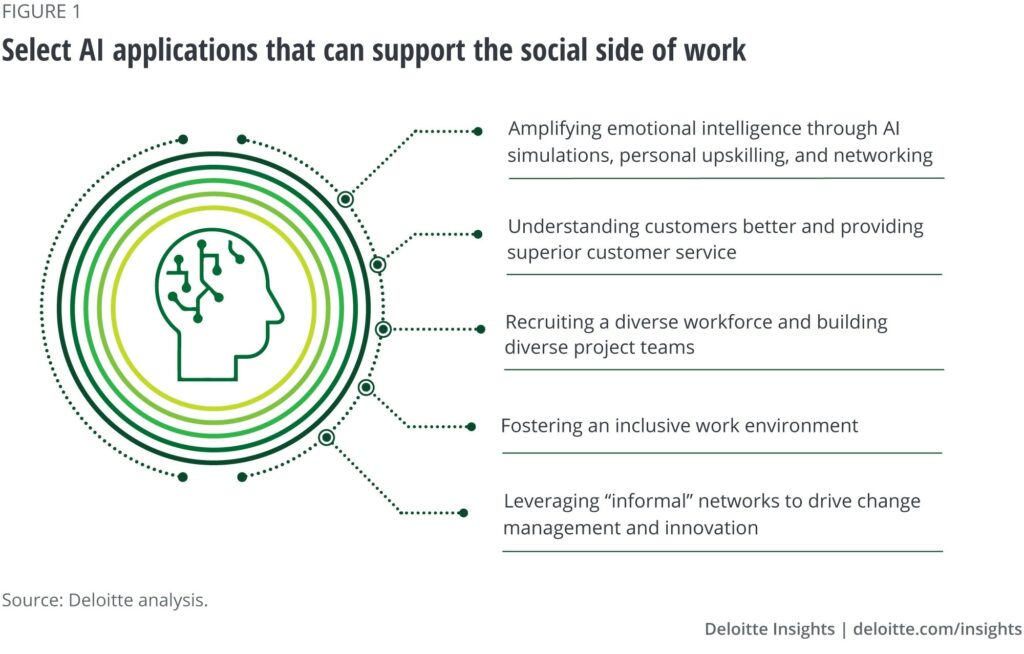
What is Bias in AI?
AI bias happens when AI systems make unfair decisions or assumptions in their design leading to unfair outputs
This can result from:
- Cognitive biases
- Lack of complete data
Challenges
- Constant discovery of new biases.
- Human involvement in data creation
Solutions
- Data and Algorithm Scrutiny
- Debiasing Strategies
- Human-driven Improvements:
- Decision-making and Collaboration
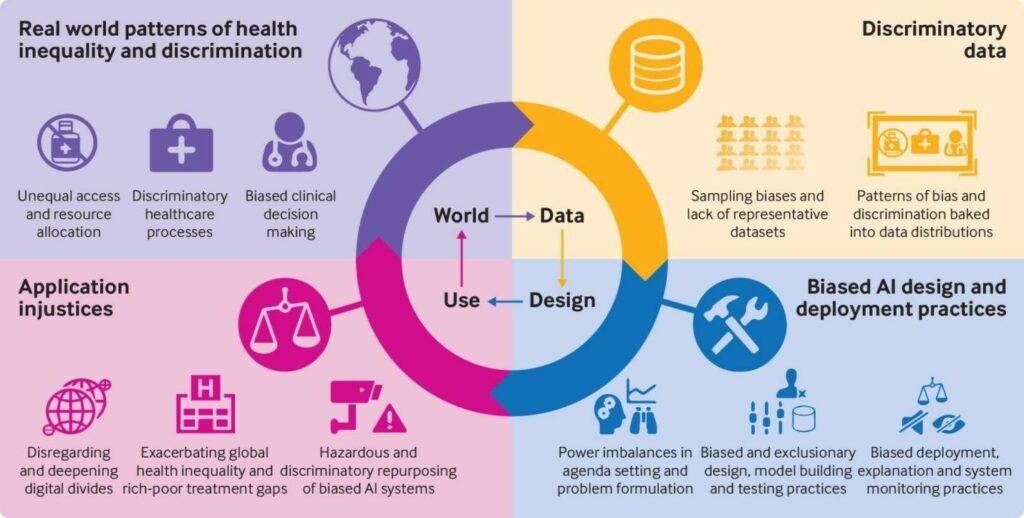
“Accent elimination in call centers, Amazon’s biased recruiting tool, racial bias in healthcare algorithms, and bias in Facebook ads showcase the need for active mitigation strategies.”
Bias in AI creeps through skewed data, biased algorithms, and the potential for manipulation. Representation bias is one of the biases that exists because of the lack of geographical diversity in image datasets of people which leads to an over-representation of certain groups over others.
When using AI-generated images, it’s important to take note of gaps in training datasets that can lead to inaccurate representations. When using generative image AI, it is important to watch out for biases in image generation that reflect common stereotypes.
As AI gets better at taking and changing pictures, we face some big questions about right and wrong. This part talks about how using AI in photography makes us think about issues like keeping things real, respecting privacy, and who really made an image. We’ll explore why these questions matter as AI becomes a bigger part of making art and capturing moments.
Ethical Lens: Mitigating Bias in AI Photography for Responsible Representation
1. Consent and Autonomy
The manipulation of images using AI without the consent of the individuals involved directly infringes upon an Individual’s autonomy. Ethical AI frameworks emphasize the importance of consent.
2. Privacy
AI-powered image manipulation can easily breach privacy, especially when images are used or shared without permission, or when manipulated images create misleading or false representations of individuals.
3. Accuracy and Misrepresentation
The capacity of AI to alter images in highly realistic ways raises concerns about accuracy and the potential for misrepresentation. This includes the creation of deepfakes or manipulated content that can deceive viewers, harm reputations, or spread misinformation.
While ethical considerations are crucial in ensuring the responsible use of AI in photography, its influence extends far beyond the realm of visual arts. In the workplace, AI’s impact on job quality is a complex and multifaceted issue, presenting both exciting opportunities and potential pitfalls.
AI & the Future of Work: Will Robots Steal Our Jobs?
Here are five ways in which AI is generally improving job quality:
1. Automation of Routine Tasks
It eliminates repetitive tasks and frees up time for thinking, creating, and innovating therefore increasing productivity and efficiency
2. Enhanced Decision Making
AI empowers you to make informed decisions with Data-driven insights
3. Personalized Learning and Development
AI tailors your development to your unique needs and goals and Unlock your full potential with custom learning paths.
4. Improved Work-Life Balance
It focuses on what matters most with AI taking care of the rest, achieving a healthier, happier work-life balance with technology’s help.
5. Creation of New Job Opportunities
AI creates new roles demanding human skills that require human intelligence, creativity, and emotional intelligence areas where machines currently fall short. While we previously explored the ways AI can enhance productivity, decision-making, and learning, Let’s delve deeper into the potential downside of AI in the workplace and how it can be solved.
Balancing Automation and Human Work
In a world where we heavily rely on AI intelligence, it is important to understand ethical AI in the work place. One of the primary concerns is the fear of Job displacement, therefore while we automate our task the focus should be more on how automation is going to add value to the work and make it efficient rather than replacing humans. Organizations should Promote a human-centered approach to avoid over-reliance on AI which results in Job insecurity and reduced human efficiency.
Balancing Automation With Human Work In A Sustainable AI Era
1. From Displacement to Upskilling
Partnering with educational institutions and training providers is crucial. By undertaking targeted programs that equip workers with the skills needed for the AI-powered workplace, can empower them to thrive rather than fear displacement. Continuous learning and adaptation become essential mantras in this evolving landscape.
2. Collaborative Harmony
We need to encourage collaborative work environments that facilitate seamless interaction and communication, ensuring humans remain at the heart of decision-making and problem-solving.
3. Building Ethical Guidelines
To ensure AI serves humanity, we need clear ethical guidelines for its development and deployment. These guidelines should address critical concerns like job displacement, bias, privacy, and accountability.
4. Continuous Monitoring and Adjustment
When we closely monitor and adjust AI implementation based on these assessments, we ensure it aligns with ethical principles and continues to benefit the workforce.
“In November 2021, UNESCO forged a consensus between all its Member States to adopt the first global ethical framework for the use of artificial intelligence with major tech giants like GSMA, INNIT, Lenovo Group, LG AI Research, Mastercard, Microsoft, Salesforce and Telefonica.”
Google even took a significant step towards ethical AI by establishing an AI ethics board. On another front, Facebook has supported an initial funding grant of $7.5 million over five years, which will help advance the growing field of ethical research and will explore fundamental issues affecting the use and impact of AI. “
Takeaways
- Meaning and Importance of Ethical AI
- Five Pillars of AI Ethics
- Addressing Bias in AI
- AI’s Impact on Job Quality
- Promoting Sustainable AI Practices
Conclusion
Establishing ethical AI in the workplace is crucial given the industry’s commitment to responsible AI development. In the age of automation, ethical AI is essential for guaranteeing job quality and fairness.
Certifications play a critical role in this landscape, offering professionals a way to validate their adherence to ethical AI principles. Demonstrate your commitment to fair and transparent AI applications with a certification from AI CERTs™.
Here are our other articles you might be interested in:
